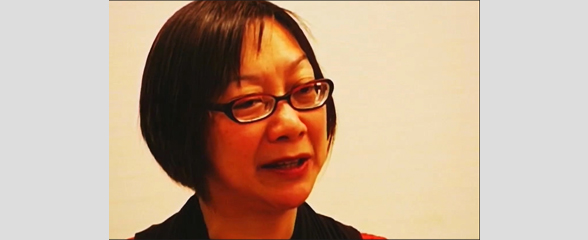 | Fay Chew Matsuda (1949-2020) led the Museum of Chinese in America (MOCA) as Executive Director from 1989 to 2006. At the time of the interview, Fay was Director of the City Hall Senior Center and Program Director for Senior Services at Hamilton Madison House. She begins the interview by sharing some of her history with the neighborhood, including her apartment on the Lower East Side, Chinese school, and her family restaurant, Three Star, at 10 Mott Street. She also describes how she became involved with MOCA, the early history of the museum, as well as the various iterations of the museum from the Chinatown History Project to the more permanent Chinatown History Museum to the more expansive Museum of Chinese in the Americas. She characterizes the initial mission of the museum as collecting oral histories and presenting the history of marginalized working-class Chinese Americans and notes that in her era, its mission expanded beyond Chinatown and it became her job to build the project into a more permanent museum. Fay highlights two exhibits that resonated with her: one showcasing family stories from Cuba, Peru, and Guatemala, titled, “Mi Familia, Mi Comunidad,” and another, titled, “Both Sides of the Cloth,” focusing on the garment industry, which connected her to her mother past as a garment worker. She also discusses the PS23 exhibit and reunion series, which brought together Chinese and Italian communities, and like many of MOCA exhibitions and programming, grew out of oral histories. Two anecdotes she shares of her most memorable experiences working at MOCA involve salvaging collections, one from a noodle shop on Mott Street called the Mee Heung Chow Main Company when it closed in 1992, and the other a Cantonese opera collection from the Chinese Musical and Theatrical Association (CMTA), a club her father was a part of. In thinking about the role of the museum in its new expanded space at 215 Centre Street, Fay saw the museum as a place for both Chinese and non-Chinese to learn about other people in this world through a presentation of diverse and even contradictory stories that they find familiar yet different from their own and to foster cross-cultural interactions. |  | Charlie Lai along with Jack Tchen are founders of the Chinatown History Project, which has gone on to become the Museum of Chinese in America. In this five part interview conducted over the course of several months Charlie talks about his childhood in Hong Kong and how his family eventually decided to immigrate to the United States when he was nine years old. He talks about living with his uncle when they first arrive in the states and saying on Long Island. His family eventually moves into their own place in Manhattan. Later he recounts his time at Princeton and his community organizing effort to recruit more Asian students to the school even though he was not fond of the institution. While still a student at Princeton he spent summers working at Basement Workshop, which was where he met Jack Tchen. Basement had many issues with inter office politics and eventually closed. Charlie and Jack began discussing ideas, which would turn into the Chinatown History Project at 70 Mulberry Street. Charlie eventually steps down as executive director of the museum because he didn’t feel he could take it to the next level. But is called back when his replacement Fay Chew needs his help in growing the organization into a bigger space. Charlie recounts in depth his fundraising efforts with Maya Lin in the wake of the 9-11 attack to try and find the museum a new home, which ends up being 215 Centre Street. He makes mention of his personal life and marriage to Pat, whom he met while community organizing in college. After leaving the museum for a second time Charlie talks about working a few months at the Chinatown Manpower Project. | 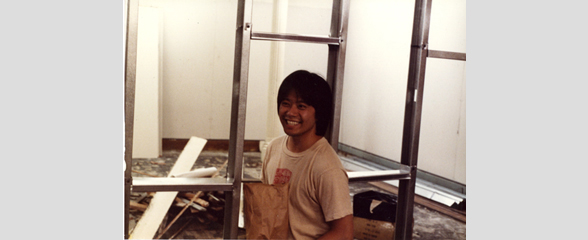 | Charlie Lai along with Jack Tchen are founders of the Chinatown History Project, which has gone on to become the Museum of Chinese in America. In this five part interview conducted over the course of several months Charlie talks about his childhood in Hong Kong and how his family eventually decided to immigrate to the United States when he was nine years old. He talks about living with his uncle when they first arrive in the states and saying on Long Island. His family eventually moves into their own place in Manhattan. Later he recounts his time at Princeton and his community organizing effort to recruit more Asian students to the school even though he was not fond of the institution. While still a student at Princeton he spent summers working at Basement Workshop, which was where he met Jack Tchen. Basement had many issues with inter office politics and eventually closed. Charlie and Jack began discussing ideas, which would turn into the Chinatown History Project at 70 Mulberry Street. Charlie eventually steps down as executive director of the museum because he didn’t feel he could take it to the next level. But is called back when his replacement Fay Chew needs his help in growing the organization into a bigger space. Charlie recounts in depth his fundraising efforts with Maya Lin in the wake of the 9-11 attack to try and find the museum a new home, which ends up being 215 Centre Street. He makes mention of his personal life and marriage to Pat, whom he met while community organizing in college. After leaving the museum for a second time Charlie talks about working a few months at the Chinatown Manpower Project. | 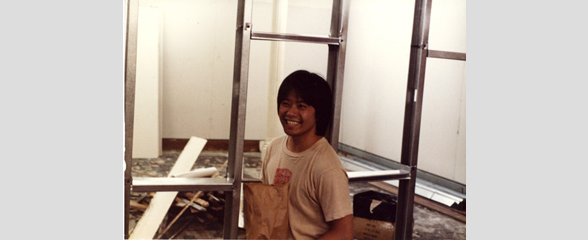 | Charlie Lai along with Jack Tchen are founders of the Chinatown History Project, which has gone on to become the Museum of Chinese in America. In this five part interview conducted over the course of several months Charlie talks about his childhood in Hong Kong and how his family eventually decided to immigrate to the United States when he was nine years old. He talks about living with his uncle when they first arrive in the states and saying on Long Island. His family eventually moves into their own place in Manhattan. Later he recounts his time at Princeton and his community organizing effort to recruit more Asian students to the school even though he was not fond of the institution. While still a student at Princeton he spent summers working at Basement Workshop, which was where he met Jack Tchen. Basement had many issues with inter office politics and eventually closed. Charlie and Jack began discussing ideas, which would turn into the Chinatown History Project at 70 Mulberry Street. Charlie eventually steps down as executive director of the museum because he didn’t feel he could take it to the next level. But is called back when his replacement Fay Chew needs his help in growing the organization into a bigger space. Charlie recounts in depth his fundraising efforts with Maya Lin in the wake of the 9-11 attack to try and find the museum a new home, which ends up being 215 Centre Street. He makes mention of his personal life and marriage to Pat, whom he met while community organizing in college. After leaving the museum for a second time Charlie talks about working a few months at the Chinatown Manpower Project. | 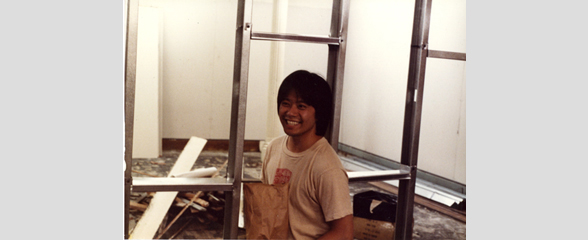 | Charlie Lai along with Jack Tchen are founders of the Chinatown History Project, which has gone on to become the Museum of Chinese in America. In this five part interview conducted over the course of several months Charlie talks about his childhood in Hong Kong and how his family eventually decided to immigrate to the United States when he was nine years old. He talks about living with his uncle when they first arrive in the states and saying on Long Island. His family eventually moves into their own place in Manhattan. Later he recounts his time at Princeton and his community organizing effort to recruit more Asian students to the school even though he was not fond of the institution. While still a student at Princeton he spent summers working at Basement Workshop, which was where he met Jack Tchen. Basement had many issues with inter office politics and eventually closed. Charlie and Jack began discussing ideas, which would turn into the Chinatown History Project at 70 Mulberry Street. Charlie eventually steps down as executive director of the museum because he didn’t feel he could take it to the next level. But is called back when his replacement Fay Chew needs his help in growing the organization into a bigger space. Charlie recounts in depth his fundraising efforts with Maya Lin in the wake of the 9-11 attack to try and find the museum a new home, which ends up being 215 Centre Street. He makes mention of his personal life and marriage to Pat, whom he met while community organizing in college. After leaving the museum for a second time Charlie talks about working a few months at the Chinatown Manpower Project. | 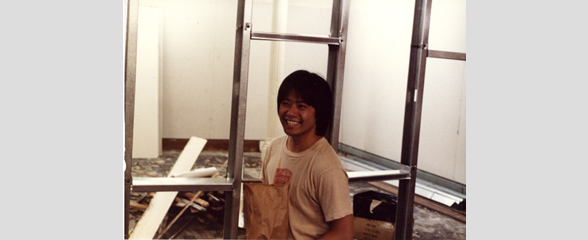 | Charlie Lai along with Jack Tchen are founders of the Chinatown History Project, which has gone on to become the Museum of Chinese in America. In this five part interview conducted over the course of several months Charlie talks about his childhood in Hong Kong and how his family eventually decided to immigrate to the United States when he was nine years old. He talks about living with his uncle when they first arrive in the states and saying on Long Island. His family eventually moves into their own place in Manhattan. Later he recounts his time at Princeton and his community organizing effort to recruit more Asian students to the school even though he was not fond of the institution. While still a student at Princeton he spent summers working at Basement Workshop, which was where he met Jack Tchen. Basement had many issues with inter office politics and eventually closed. Charlie and Jack began discussing ideas, which would turn into the Chinatown History Project at 70 Mulberry Street. Charlie eventually steps down as executive director of the museum because he didn’t feel he could take it to the next level. But is called back when his replacement Fay Chew needs his help in growing the organization into a bigger space. Charlie recounts in depth his fundraising efforts with Maya Lin in the wake of the 9-11 attack to try and find the museum a new home, which ends up being 215 Centre Street. He makes mention of his personal life and marriage to Pat, whom he met while community organizing in college. After leaving the museum for a second time Charlie talks about working a few months at the Chinatown Manpower Project. |  | Charlie Lai along with Jack Tchen are founders of the Chinatown History Project, which has gone on to become the Museum of Chinese in America. In this five part interview conducted over the course of several months Charlie talks about his childhood in Hong Kong and how his family eventually decided to immigrate to the United States when he was nine years old. He talks about living with his uncle when they first arrive in the states and saying on Long Island. His family eventually moves into their own place in Manhattan. Later he recounts his time at Princeton and his community organizing effort to recruit more Asian students to the school even though he was not fond of the institution. While still a student at Princeton he spent summers working at Basement Workshop, which was where he met Jack Tchen. Basement had many issues with inter office politics and eventually closed. Charlie and Jack began discussing ideas, which would turn into the Chinatown History Project at 70 Mulberry Street. Charlie eventually steps down as executive director of the museum because he didn’t feel he could take it to the next level. But is called back when his replacement Fay Chew needs his help in growing the organization into a bigger space. Charlie recounts in depth his fundraising efforts with Maya Lin in the wake of the 9-11 attack to try and find the museum a new home, which ends up being 215 Centre Street. He makes mention of his personal life and marriage to Pat, whom he met while community organizing in college. After leaving the museum for a second time Charlie talks about working a few months at the Chinatown Manpower Project. | 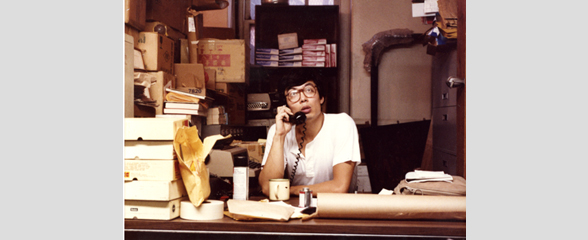 | Jack Tchen along with Charlie Lai are founders of the Chinatown History Project, which has gone on to become the Museum of Chinese in America. In this multiple part interview Tchen discusses growing up in Wisconsin and his family’s ties to China. He then recounts his time at Madison college and how he got more involved in activism and Asian American studies. Next he discusses his time working at Basement workshop, how he met Charlie and working on exhibitions. He left Basement workshop with Charlie and they created the eight pound livelihood exhibition. After, Tchen left the Chinatown history project he started teaching at Queen college and NYU and started the Asian Studies program at NYU. Over the years Tchen often went back to help MOCA especially when the museum expanded and created the core exhibition. He discusses his personal life and his family, the interview ends with a discussion of the challenges of change in museums and MOCA. | 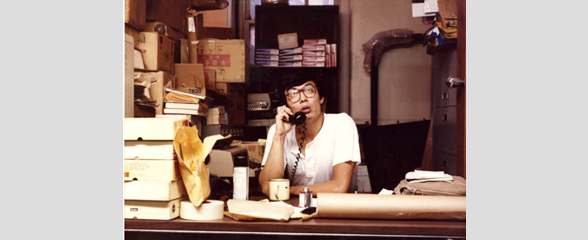 | Jack Tchen along with Charlie Lai are founders of the Chinatown History Project, which has gone on to become the Museum of Chinese in America. In this multiple part interview Tchen discusses growing up in Wisconsin and his family’s ties to China. He then recounts his time at Madison college and how he got more involved in activism and Asian American studies. Next he discusses his time working at Basement workshop, how he met Charlie and working on exhibitions. He left Basement workshop with Charlie and they created the eight pound livelihood exhibition. After, Tchen left the Chinatown history project he started teaching at Queen college and NYU and started the Asian Studies program at NYU. Over the years Tchen often went back to help MOCA especially when the museum expanded and created the core exhibition. He discusses his personal life and his family, the interview ends with a discussion of the challenges of change in museums and MOCA. | 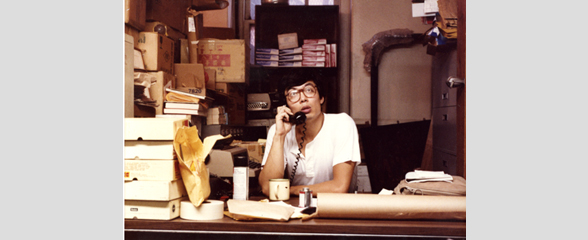 | Jack Tchen along with Charlie Lai are founders of the Chinatown History Project, which has gone on to become the Museum of Chinese in America. In this multiple part interview Tchen discusses growing up in Wisconsin and his family’s ties to China. He then recounts his time at Madison college and how he got more involved in activism and Asian American studies. Next he discusses his time working at Basement workshop, how he met Charlie and working on exhibitions. He left Basement workshop with Charlie and they created the eight pound livelihood exhibition. After, Tchen left the Chinatown history project he started teaching at Queen college and NYU and started the Asian Studies program at NYU. Over the years Tchen often went back to help MOCA especially when the museum expanded and created the core exhibition. He discusses his personal life and his family, the interview ends with a discussion of the challenges of change in museums and MOCA. |









